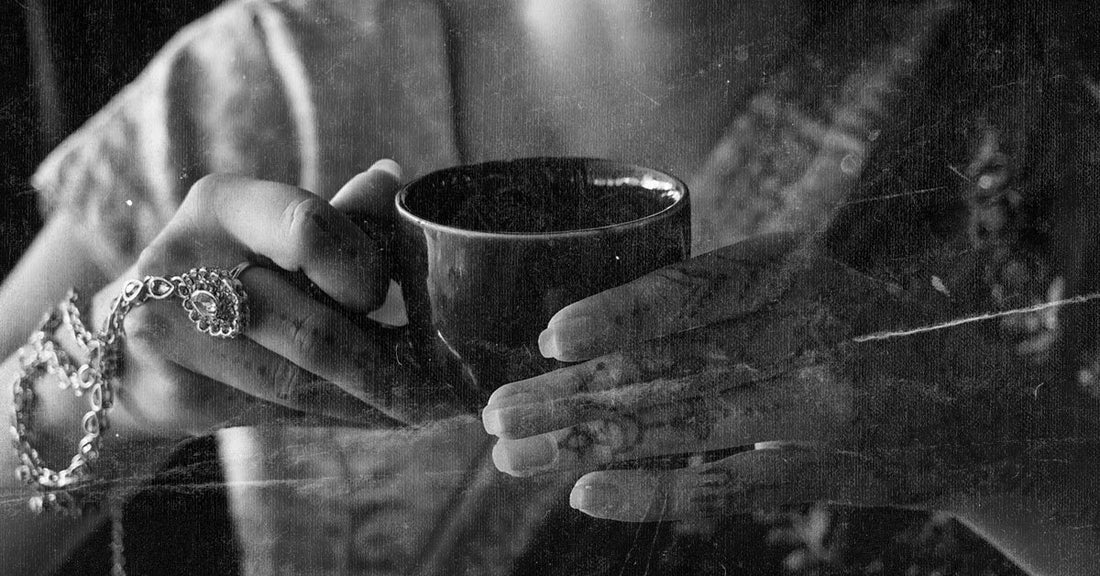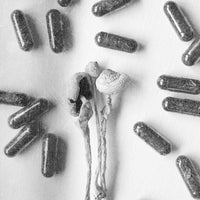Unlike his parents, Sadaf Hussain did not drink a cup of masala chai every morning while growing up. He was told that he would become dark if he drank tea, a racist notion that is common in many households in India. To rid him of his thumb-sucking habit, his aunt once dipped his thumb in a cup of piping hot chai. And he lost a tooth while drinking tea. These unsavory incidents kept him away from tea until he became a chef and developed a taste for chai while exploring street food in the historic old cities of Bhopal and Delhi, where the chai culture runs deep.
Two generations ago, tea was a novelty in Hussain’s family. He describes this in his essay “High on Chai and Samosa” in the recently published book Desi Delicacies: Food Writing from Muslim South Asia. “My nani [maternal grandmother] used to tell me that when she was growing up in the 1940s, Indian and English tea salesmen would visit her home in Bihar to give free samples of tea and demonstrate how to make it,” he tells Trends w/ Benefits.
Millions of Indians sip countless cups of masala chai every day. But was it always the case? “Chai is a recent phenomenon in India,” says Hussain. Masala chai, which was invented in colonial India, is now consumed in copious quantities in the Indian subcontinent.
The British Take Advantage of the Indigenous Tea Plant
Though the discovery and introduction of tea in India is credited to the British colonists, tea was already growing in the forests of Assam in eastern India. Tea leaves did not grow on a bush back then but on a wild tree that was about 20 feet high. The local Singpho tribe have been called the “original tea drinkers” because they made a brew from its tender shoots.
In the middle of the 19th century, when the Chinese supply of tea to Britain was disrupted after the Opium Wars, the British realized they needed to find a new supplier of tea and started to explore the possibility of growing tea in India.
“When the British established tea plantations in India, a lot of trial and error happened. They burnt huge tracts of forests and sowed the China variety of tea, which did not flourish,” says Rekha Sarin, author of Chai: The Experience of Indian Tea. The British eventually started to plant the indigenous variety of tea (camellia sinensis assamica), which yielded good results. Soon, in 1839, the British formed Assam Tea Company and the industry began to prosper.
By the 1860s, the British needed more labor in the tea gardens and paid contractors to bring poor people from tribal areas of the erstwhile Central Provinces, Bihar, Orissa and Nepal to work for them. This is how women and adivasis (indigenous people) became a major part of the workforce that labored in tea plantations, something that is prevalent even today.
“The plantations that developed in the second half of the nineteenth century, and expanded in the early twentieth century, created what was essentially a new slave system,” says Erika Rappaport, cultural historian and author of A Thirst for Empire: How Tea Shaped the Modern World. “Workers signed up under indenture agreements and were lied to about how easy the work was on the tea gardens. But the travel to the plantations was slow and dangerous. The workers were subjected to horrible conditions, such as long hours, poor pay, fines for small infractions and rampant diseases and flogging, rape and similar abuses.”
The British Convince Indians that Tea is ‘Indian’
The British first introduced tea to elite Indian men, who were the first ones to get a Western education. Tea became a status symbol and the richest drank it the English way with ornate tea sets. But there was more to be done.
“In the late 19th century British-born planters were very keen to develop the Indian market because they had surpluses, so they began to try to sell to tea workers first and to large entities such as the Indian Army,” says Rappaport. The British left no stone unturned when it came to making tea an every day drink in India. Tea samples and demos made their way to cities, villages, workplaces, festivals, sports events, factories, mines and railway stations.
“There also was a lot of advertising, so much so that Gandhi even singled this out as a form of colonialism,” says Rappaport. “By the 1930s, there were mobile vans that showed movies about tea, gave lessons and served tea … everywhere Indians were told that tea was ‘Indian.’”
Indians Accept Tea on their Terms by Inventing Masala Chai
There is no specific documentation about the invention of masala chai. It is estimated to have originated between the early and mid-twentieth century. “When chai came to India, it was black tea,” says Hussain, the chef whose love of chai came later in life. “We added this tea to an existing herbal infusion of karha. We said, ‘We will drink it, but in our own way.’ So, we kept on adding ingredients such as spices, sugar and milk until we liked it.”
The massive campaign by the British to popularize tea succeeded. Once masala chai was born, Indians took to it. It was no longer a drink relegated to the bourgeois. But there was opposition to it. From the 1920s to ’30s, the Swadeshi movement, which formed an important part of India's struggle for independence, began to exhort the public to reject tea, an imperial product. However, they achieved little success in keeping Indians away from their cup of chai.
How Masala Chai is Drunk Today in India
Masala chai is both a staple on the streets of India, where it is served in tea stalls, as well as in homes and workplaces. The immense popularity of masala chai can be attributed to its taste, refreshing quality and, most importantly, its cheap cost.
“Tea leaves are expensive and that’s why we use CTC tea—that is, crush, tear, curl, a method of tea processing—or tea dust, which is cheaper,” says Sarin, who traveled to tea estates and famous tea shops across the country while writing her book. “Tea shop owners use it over and over again, which gives the tea a strong flavour. A small amount of spices goes a long way. With each use, the spices keep infusing their fragrance and flavour into the chai.”
There are three basic ingredients used in masala chai—tea, milk and sugar—and it usually contains some herbs and spices, such as ginger, green cardamom, tulsi, cinnamon, cloves, bay leaves, pepper, fennel, star anise, licorice and nutmeg.
In India, each region has its own way of drinking tea. Masala chai, too, has its own regional versions based on the climate and availability of local ingredients. “In the north, we add tulsi and ginger into our chai for warmth, especially in the winter,” says Sarin. “In Assam, the tea garden workers add salt to their tea apart from ginger and bay leaf to revive themselves in the humid climate. In the south, on the Malabar coast, they have pepper vines growing in their tea gardens so they add peppercorns to their chai.”
Read more: Mumbai's Chai of Choice
Masala Chai Goes Global
Hussain and his friend Archit Puri talked about the history of chai in an episode of their Hinglish podcast Naan Curry, where they also highlight the most recent development in the history of chai—its McDonaldization. The advent of globalization, migration and tourism have put masala chai on the world map.
In 2014, American talk show host Oprah Winfrey launched her own brand of masala chai called Oprah Chai Tea in collaboration with Starbucks. The presence of chai tea lattes—a drink that is sweeter, frothier and milkier than masala chai, with all kinds of spices thrown in—in cafes in the U.S. and UK has baffled many South Asians. Masala chai is also sold in its loose-leaf form and tea bags in the US, UK and other countries.
The global evolution of masala chai has not left India untouched. For their daily dose of masala chai, Indian millennials now also rely on homegrown cafe chains like Chai Point and Chaayos, which offer doorstep delivery. From the dense jungles of Assam where it once grew on trees to being sold in disposable home-delivered flasks, chai has traveled a long, long way.
Vandana K is an independent journalist and producer based in Delhi, India. You can find her on Instagram and Twitter.




